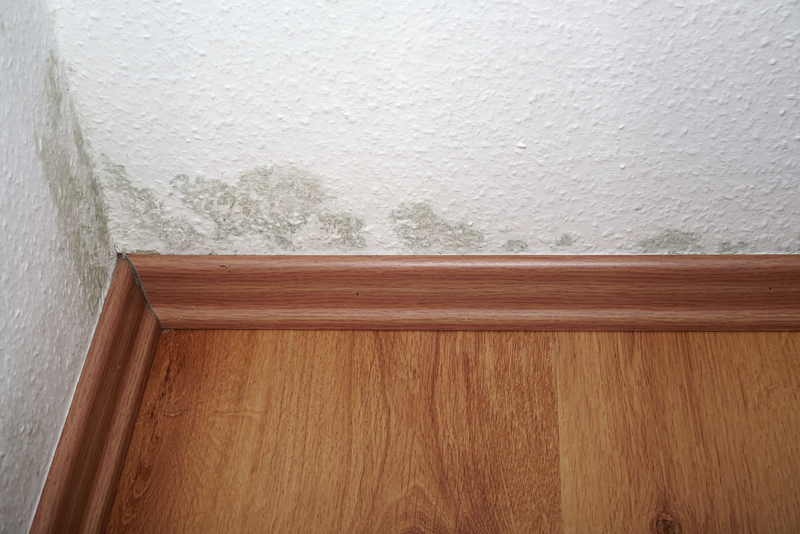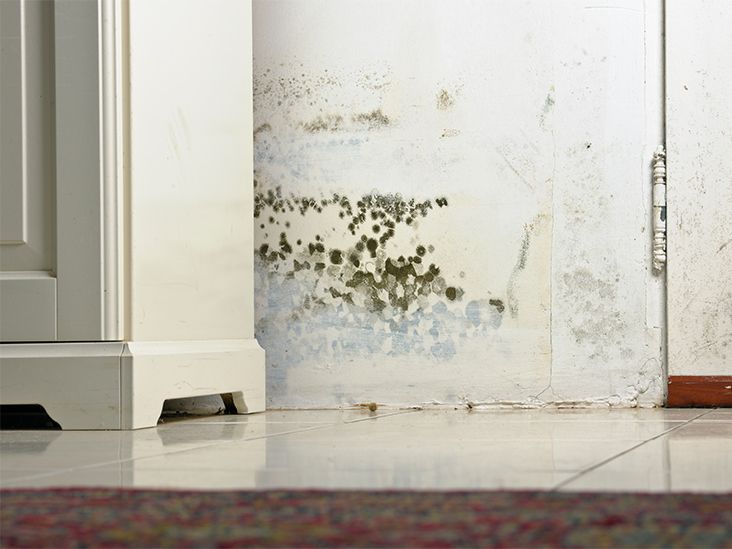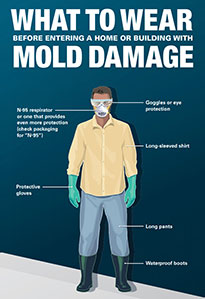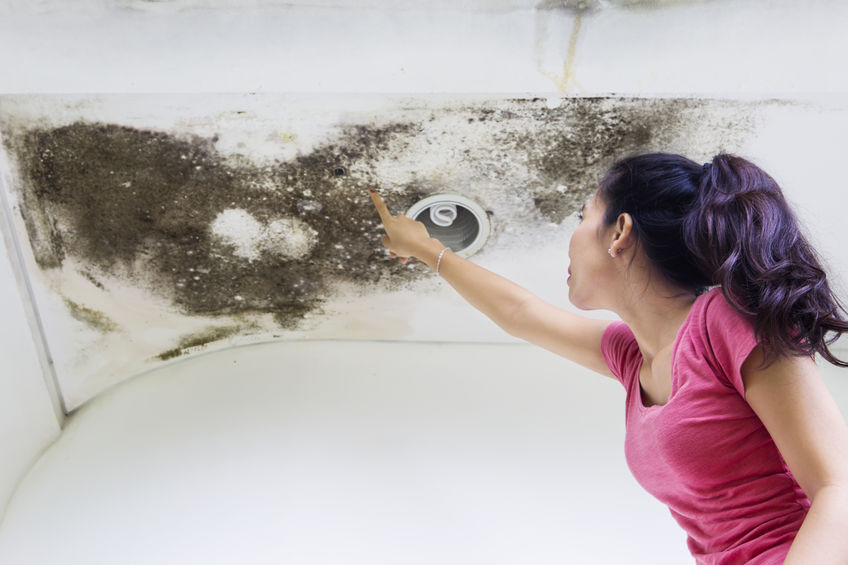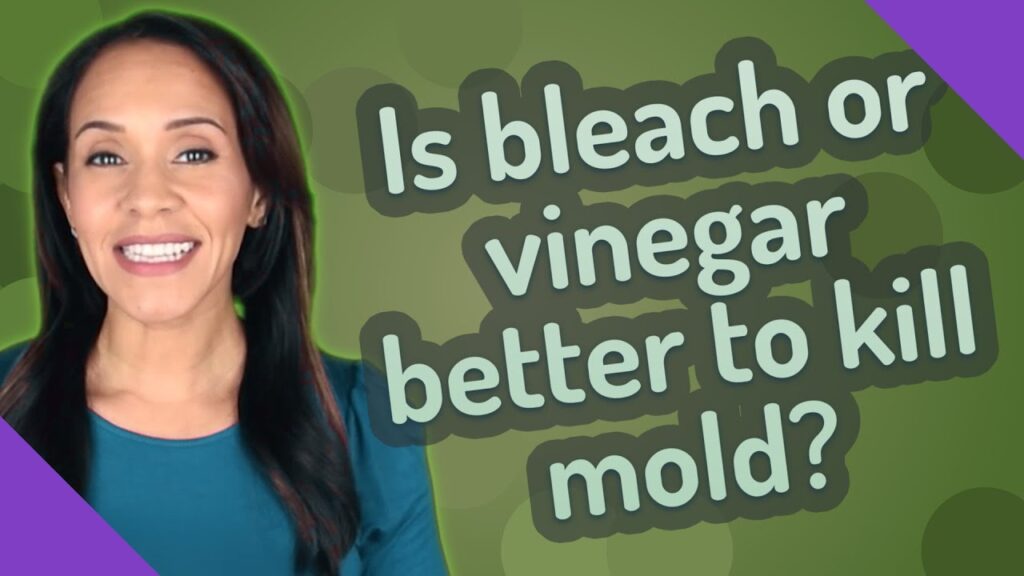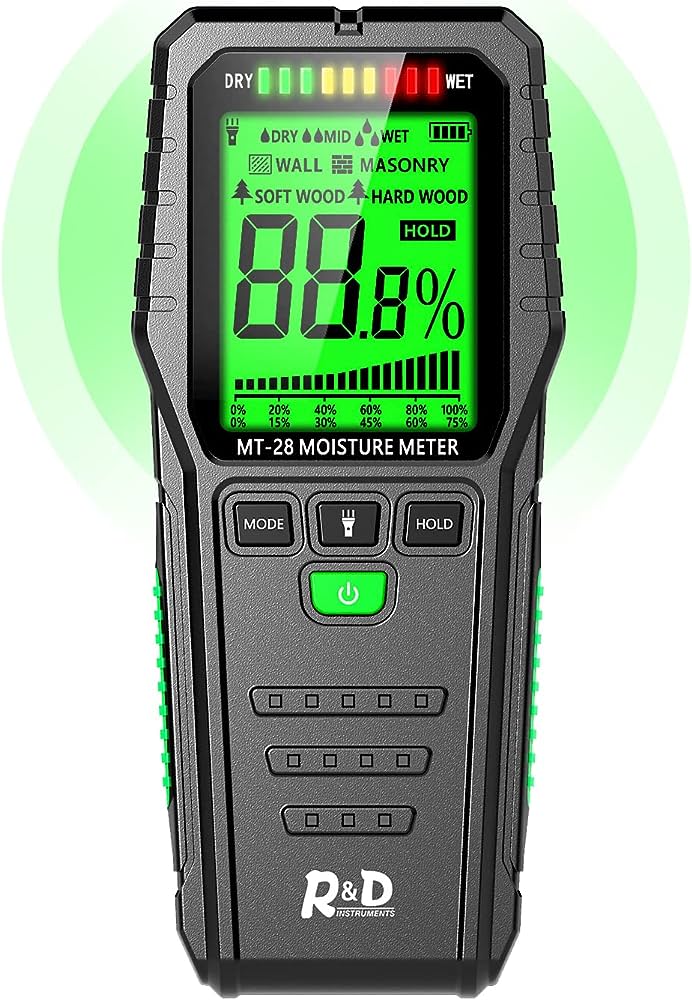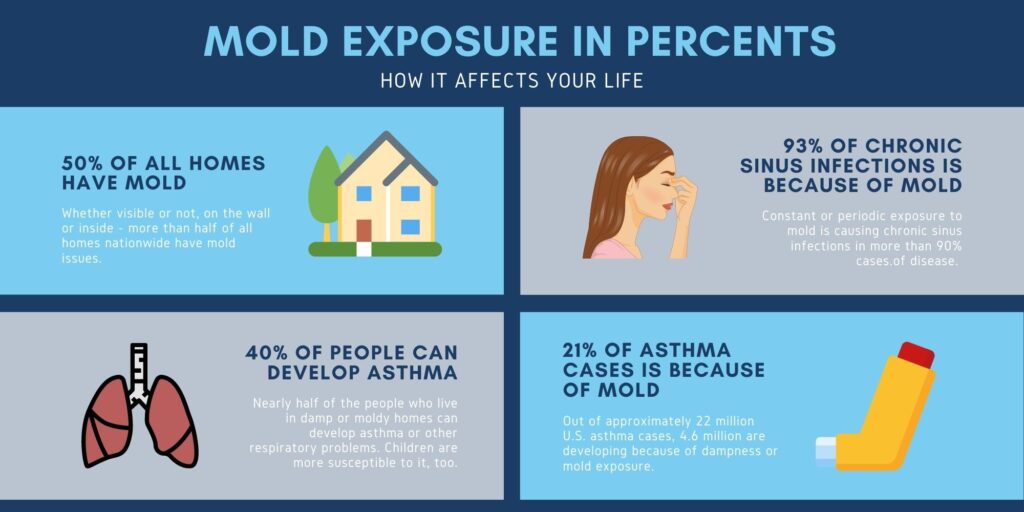You may be unaware, but hidden behind the walls of your home could be a silent and potentially dangerous intruder – mold. Mold is a common issue that many homeowners face, and it can often go undetected for long periods of time. But how can you tell if you have mold lurking behind your drywall? In this article, we will explore some telltale signs and indicators that can help you determine if your home is harboring this unwelcome guest. By being vigilant and aware, you can take the necessary steps to address any mold issues and ensure the health and safety of your living space.
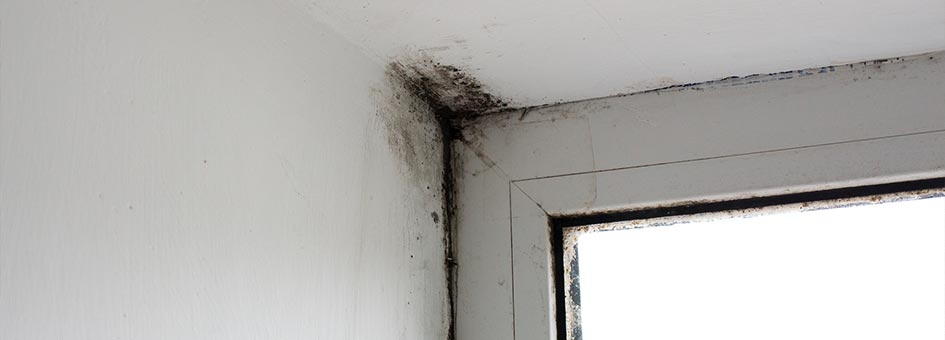

Appearance of Mold on Drywall
Visible Signs of Mold
When it comes to detecting mold on drywall, there are a few key signs you can look out for. The most obvious is the visible presence of mold itself. Mold can come in various colors, including black, green, and even white. If you notice any patches or spots of discoloration on your drywall, it is important to investigate further, as this could be an indication of mold growth.
Discoloration on Drywall
One of the first signs that mold may be present behind your drywall is discoloration. As mold grows and spreads, it can cause the affected area to appear darker or stain the surface. Keep an eye out for any changes in color on your drywall, especially if it is accompanied by a musty odor or other signs of moisture.
Black Spots on Drywall
Black spots on your drywall are a common indicator of mold growth. These spots may vary in size and shape and can appear in clusters or as individual patches. If you spot any black spots on your drywall, it is important to take immediate action to address the issue, as prolonged exposure to mold can have negative health effects.
Fuzzy or Powdery Texture
Another characteristic of mold growth on drywall is its texture. When mold develops, it can form a fuzzy or powdery surface. This fuzzy or powdery texture is especially common with certain types of mold, such as Aspergillus and Penicillium. If you come across any areas with this texture on your drywall, it is crucial to have it inspected and remediated as soon as possible.
Musty Odor
A telltale sign of mold growth behind drywall is a musty smell. Mold has a distinct odor that is often described as damp or earthy. If you notice a persistent musty smell in your home, particularly in areas near your drywall, it is worth investigating further. The presence of this odor, combined with any of the aforementioned visual signs, is a strong indication that mold may be present.
Health Symptoms and Allergies
Respiratory Issues
Exposure to mold can have various health effects, particularly on the respiratory system. If you have mold behind your drywall, you may experience respiratory issues such as coughing, wheezing, and shortness of breath. These symptoms can be especially problematic for individuals with asthma or other pre-existing respiratory conditions.
Allergic Reactions
Mold spores are known allergens and can trigger allergic reactions in some individuals. Allergic symptoms may include sneezing, itchy and watery eyes, congestion, and a runny nose. If you notice these symptoms when spending time in areas near moldy drywall or if they worsen when you are at home, it is important to consider the possibility of mold growth.
Skin Irritation
Direct contact with moldy drywall can lead to skin irritation. This can manifest as redness, rash, itching, or even hives. If you find that your skin becomes irritated after coming into contact with specific areas of your drywall, it is essential to take steps to address the mold issue and protect yourself from further exposure.
Headaches and Fatigue
In some cases, mold exposure can also cause symptoms such as headaches and fatigue. These symptoms can be particularly concerning as they can have a significant impact on daily life and overall well-being. If you consistently experience headaches or find yourself feeling fatigued without a clear explanation, it may be worth investigating whether mold is present in your home, including behind your drywall.
Persistent Coughing
One of the most common health symptoms associated with mold exposure is a persistent cough. This can be a dry, hacking cough that doesn’t seem to go away. If you notice that you or others in your household have an ongoing cough that doesn’t seem to be caused by a cold or other respiratory condition, it is important to consider the possibility of mold behind your drywall.


Water Damage and Moisture Issues
Water Stains on the Drywall
Water stains on drywall can be an indicator of previous or ongoing water damage, which can lead to mold growth. These stains often appear as discolored patches or marks on the surface of the drywall. If you notice any water stains, it is crucial to investigate the source of the water and address any potential moisture issues promptly to prevent mold growth.
Leaking Pipes or Roof
Leaking pipes or a damaged roof can provide the perfect conditions for mold to grow behind drywall. If you notice any signs of water damage, such as damp spots, water stains, or a musty smell, it is essential to investigate the source of the moisture. Leaking pipes or a compromised roof should be repaired as soon as possible to prevent further damage and potential mold growth.
Humidity and Condensation
High humidity levels and condensation can create an environment that is conducive to mold growth. Areas with poor ventilation, such as bathrooms, kitchens, and basements, are particularly susceptible to humidity and condensation issues. If you notice excessive moisture buildup or condensation on your windows or walls, it is important to take steps to address the humidity levels in your home to prevent mold growth behind your drywall.
Flooding or Water Accumulation
Flooding or significant water accumulation in your home can result in severe water damage and promote mold growth behind drywall. If your home has experienced a flood or significant water leak, it is crucial to remove the water, dry the affected areas, and address any related issues promptly. Failure to do so can lead to long-term mold problems and potential health risks.
Damp or Musty Smell
A persistent damp or musty smell in your home can be a strong indication of water damage or mold growth. If you notice this odor, particularly in areas near your drywall, it is important to investigate the source of the smell and address any potential moisture issues or mold growth promptly. Ignoring the smell may lead to further damage and potential health risks.
Investigation Techniques
Visual Inspection
A visual inspection is one of the first steps in detecting mold behind drywall. Carefully examine the affected areas of drywall for visible signs of mold, such as discoloration, black spots, or a fuzzy texture. Look for any additional indicators, such as water stains or a musty smell, that may suggest mold growth. Remember to inspect both the surface of the drywall and any concealed spaces, such as wall cavities or behind fixtures.
Using a Moisture Meter
A moisture meter is a useful tool for detecting hidden moisture within your drywall, which can be an indication of potential mold growth. By measuring the moisture content of your drywall, you can identify areas that may be susceptible to mold development. Ensure that you follow the manufacturer’s instructions and use the moisture meter to check multiple areas of your drywall to get an accurate reading.
Thermal Imaging
Thermal imaging cameras can be particularly helpful in identifying areas of moisture and potential mold growth behind drywall. These cameras detect temperature variations and can reveal hidden moisture that may not be visible to the naked eye. By using thermal imaging, you can pinpoint areas that require further investigation and take appropriate remedial action.
Cutting Small Test Sections
In some cases, it may be necessary to make small cuts in the drywall to confirm the presence of mold behind it. This can be done in inconspicuous areas or where signs of mold are already observed. By cutting small test sections, you can assess the extent of the mold problem and determine the appropriate course of action for remediation.
Professional Mold Testing
If you suspect mold growth behind your drywall or if you are unable to determine the extent of the problem through visual inspection, it may be necessary to seek professional mold testing. Mold testing involves collecting air or surface samples to analyze for the presence and type of mold spores. This can provide valuable information on the severity of the mold issue and help guide the remediation process.


Common Locations for Mold
Bathrooms and Kitchens
Bathrooms and kitchens are areas prone to high humidity and moisture, making them common locations for mold growth. The combination of steam from showers and cooking, inadequate ventilation, and water leaks can create an ideal breeding ground for mold behind drywall. Be vigilant in inspecting these areas for signs of mold growth and take preventative measures to reduce humidity levels, such as using exhaust fans or opening windows during and after hot showers or cooking.
Basements and Crawl Spaces
Basements and crawl spaces are notorious for being damp and poorly ventilated, making them susceptible to mold growth. Moisture can seep through the foundation or accumulate from plumbing leaks, leading to the development of mold behind the drywall. Regularly inspect your basement and crawl spaces for any signs of mold, and consider using a dehumidifier to control moisture levels in these areas.
Attics and Roof Spaces
Attics and roof spaces are often overlooked when it comes to mold prevention, even though they can be prime locations for mold growth. Roof leaks, improper insulation, and poor ventilation can result in excessive moisture accumulation, creating an environment conducive to mold behind drywall. Inspect your attic and roof spaces for signs of water damage, such as staining or discolored areas, and address any issues promptly to prevent mold growth.
Behind Appliances and Fixtures
Appliances and fixtures, such as dishwashers, washing machines, and sinks, can be hidden sources of moisture that contribute to mold growth behind drywall. Leaks or condensation from these appliances can go unnoticed for extended periods, providing the ideal conditions for mold to thrive. Regularly inspect behind appliances and fixtures for any signs of water damage or mold, and promptly address any leaks or issues to prevent further damage.
Wall Cavities
Wall cavities, particularly those near plumbing or exterior walls, can harbor mold growth without being immediately apparent. Water leaks or condensation can seep into wall cavities, creating a hidden breeding ground for mold behind drywall. If you suspect mold in your home but cannot find any visible signs, it may be necessary to have a professional inspect wall cavities and conduct further testing to identify the presence of mold.
Preventive Measures
Proper Ventilation and Air Circulation
Proper ventilation and air circulation are crucial in preventing mold growth behind drywall. Ensure that your home has adequate ventilation in areas prone to moisture, such as bathrooms, kitchens, and basements. Use exhaust fans or open windows to reduce humidity levels during and after activities that generate moisture, such as showering or cooking. Additionally, ensure that air circulation is not obstructed by furniture or other objects, as stagnant air can contribute to moisture buildup and mold growth.
Addressing Water Leaks and Moisture Sources
Promptly addressing water leaks and moisture sources is essential in preventing mold growth behind drywall. Regularly inspect plumbing fixtures, pipes, and appliances for any signs of leaks or condensation, and repair them promptly. Be proactive in identifying and addressing potential water intrusion points, such as damaged roofs or windows, to prevent moisture from entering your home and causing mold problems.
Controlling Indoor Humidity Levels
Maintaining proper indoor humidity levels is key in preventing mold growth. Ideally, indoor humidity should be kept below 60% to inhibit mold development. Consider using dehumidifiers in areas with high humidity or installing whole-home humidity control systems. Regularly monitor humidity levels with a hygrometer to ensure they are within the recommended range, and take necessary steps to reduce humidity if it exceeds the desired levels.
Regular Cleaning and Maintenance
Regular cleaning and maintenance can help prevent mold growth behind drywall. Dust and clean surfaces regularly to prevent the buildup of mold spores. Pay particular attention to areas prone to moisture, such as bathrooms and kitchens. Regularly inspect walls, ceilings, and other surfaces for any signs of discoloration, staining, or water damage. Promptly address any issues or areas of concern to prevent mold growth and potential health risks.
Professionally Sealing and Insulating Walls
Professionally sealing and insulating walls can help prevent moisture infiltration and the subsequent growth of mold behind drywall. Proper insulation can help maintain a stable temperature and reduce the likelihood of condensation forming on the walls. Sealing any gaps or cracks in the walls can help prevent water intrusion and potential mold issues. Consider consulting with a professional contractor to ensure that your walls are adequately sealed and insulated to minimize the risk of mold growth.
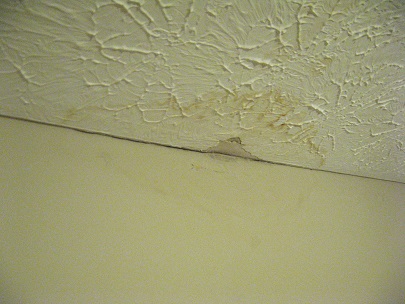

DIY Remediation Methods
Protective Gear and Equipment
Before starting any DIY mold remediation, it is essential to prioritize your safety by wearing appropriate protective gear and equipment. This may include gloves, eyewear, a respirator or mask, and disposable coveralls. These safety measures will help reduce your risk of exposure to mold spores and potentially harmful substances during the remediation process.
Removing Affected Drywall
When removing mold-affected drywall, it is crucial to take precautions and minimize the spread of mold spores. Start by isolating the work area using plastic sheeting and tape. Then, carefully cut out the affected sections of drywall, ensuring that you maintain a safe distance from the moldy areas. Double-bag and seal the removed drywall to prevent further contamination, and dispose of it properly according to local regulations.
Cleaning and Disinfecting the Area
After removing the affected drywall, thoroughly clean and disinfect the area to eliminate any residual mold spores. Use a solution of water and detergent or a commercial mold cleaner to clean the surfaces. Scrub the area thoroughly, paying particular attention to any visible mold or mold stains. Follow up by disinfecting the area using a solution of water and bleach or a suitable disinfectant recommended for mold remediation.
Drying and Dehumidifying
After cleaning, it is crucial to thoroughly dry the area to prevent any remaining moisture from promoting further mold growth. Use fans and dehumidifiers to accelerate the drying process and ensure that the humidity levels are within the recommended range. Monitor the area for several days to confirm that it is completely dry before proceeding with repairs or applying mold-resistant paint.
Applying Mold-Resistant Paint
Once the area is completely dry and free from mold, consider applying mold-resistant paint to prevent future mold growth. Mold-resistant paint contains additives that help inhibit the growth of mold and mildew on the surface. Follow the manufacturer’s instructions for application and allow sufficient drying time before restoring the area with new drywall or paint.
Professional Mold Remediation
Assessment and Mold Testing
Professional mold remediation typically begins with a comprehensive assessment of the mold issue. Certified mold inspectors will inspect the affected areas and may perform mold testing to determine the extent of the mold growth and identify the type of mold present. This assessment helps inform the remediation process and ensures that the appropriate measures are taken to address the mold problem effectively.
Containment and Safety Measures
During professional mold remediation, containment measures are implemented to prevent the spread of mold spores to unaffected areas of the home. This typically involves isolating the work area using plastic sheeting and setting up negative air pressure to ensure that airborne mold spores are contained within the work zone. Additionally, the remediation team will wear appropriate personal protective equipment to minimize their exposure to mold during the process.
Removal of Mold-Infested Materials
Professional mold remediation involves the careful removal and disposal of mold-infested materials, including drywall, carpeting, and insulation. These materials are securely sealed and bagged to prevent the spread of mold spores during the removal process. The remediation team will take steps to minimize the disturbance of moldy materials and ensure their safe removal from the property.
Cleaning and Disinfection
After removing mold-infested materials, the remediation team will thoroughly clean and disinfect the affected areas. Specialized mold cleaners and disinfectants are used to eliminate any remaining mold spores and inhibit future mold growth. The team will use HEPA vacuums and other cleaning techniques to ensure that the area is thoroughly cleaned and free from mold contamination.
Preventing Future Mold Growth
Once the remediation process is complete, professionals may recommend various preventive measures to minimize the risk of future mold growth. This can include addressing any underlying moisture issues, improving ventilation, applying mold-resistant coatings, or recommending regular maintenance practices to keep the environment dry and mold-free.
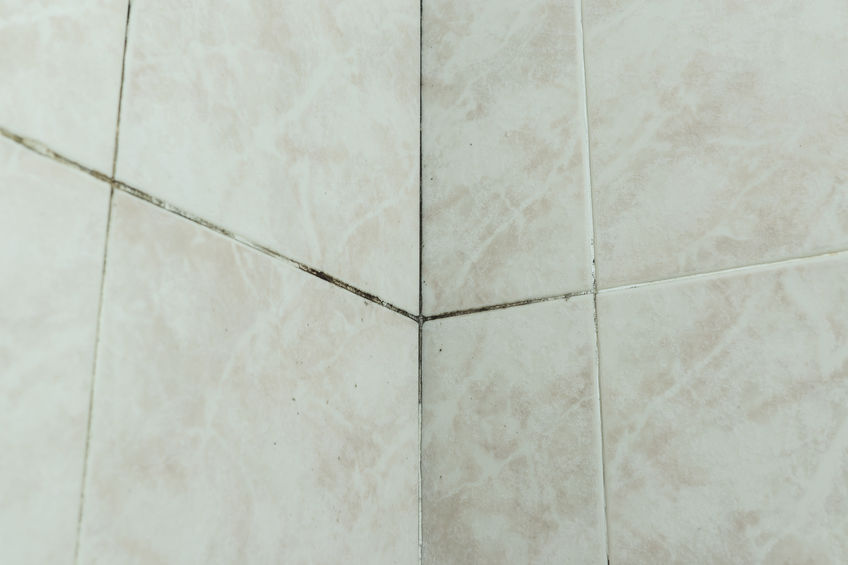

Health Risks and Safety Precautions
Respiratory Impacts
Exposure to mold, particularly for individuals with respiratory conditions, can have significant health impacts. Inhalation of mold spores can cause or exacerbate respiratory issues such as asthma, bronchitis, or allergic reactions. It is essential to take appropriate safety precautions during mold remediation to protect your respiratory health.
Allergic Reactions
Mold spores are known allergens and can trigger allergic reactions in susceptible individuals. Sneezing, coughing, itchy and watery eyes, congestion, and skin rashes are common allergic symptoms associated with mold exposure. If you experience these symptoms during or after exposure to mold, seek medical attention and consider professional help for remediation.
Toxic Mold Exposure
While not all molds are toxic, some strains, such as Stachybotrys chartarum (black mold), can produce mycotoxins that pose health risks. Prolonged exposure to toxic molds can lead to severe symptoms, including respiratory distress, neurological issues, and other systemic effects. If you suspect the presence of toxic mold, it is crucial to seek professional assistance for safe removal and remediation.
Using Personal Protective Equipment (PPE)
When dealing with mold remediation, proper use of personal protective equipment (PPE) is crucial to minimize exposure to mold spores and potential health risks. This typically includes wearing gloves, safety goggles or glasses, a respirator or mask, and disposable coveralls. Follow the manufacturer’s instructions and ensure that the PPE is of the appropriate rating for mold remediation.
Proper Ventilation during Remediation
Maintaining adequate ventilation during mold remediation is essential to reduce the concentration of airborne mold spores. Use fans, open windows, or employ exhaust systems to improve air circulation and remove mold spores from the work area. Be cautious not to spread mold spores to uncontaminated areas of the home during the remediation process.
Seeking Professional Help
Complex or Extensive Mold Growth
If you are dealing with complex or extensive mold growth behind drywall, it is advisable to seek professional help. Mold remediation specialists have the expertise and equipment to assess, contain, and safely remove mold from your home. They can effectively address large-scale mold problems that may be challenging to handle on your own.
Unsafe Conditions or Structural Damage
Unsafe conditions or significant structural damage resulting from mold growth may require professional assistance. Mold growth in areas such as load-bearing walls, HVAC systems, or electrical components can pose serious risks. Professionals with the necessary training and experience can address these issues safely and effectively, minimizing further damage.
Health Concerns or Symptoms
If you or members of your household are experiencing persistent health concerns or symptoms related to mold exposure, it is advisable to seek professional help. Certified mold remediation specialists can conduct thorough assessments, provide accurate diagnostics, and implement appropriate remediation measures to address the health risks associated with mold behind drywall.
Uncertainty about DIY Remediation
If you are uncertain about your ability to adequately address a mold problem behind drywall on your own, it is best to consult with professionals. They can provide guidance, assess the severity of the problem, and offer appropriate remediation options tailored to your specific situation. Seeking professional help can give you peace of mind and ensure that the mold issue is properly resolved.
Minimizing Future Mold Issues
Professionals can also provide valuable advice and recommendations for minimizing future mold issues in your home. They can help identify and address underlying causes of mold growth, recommend preventive measures, and provide guidance on proper maintenance practices. By consulting with professionals, you can take proactive steps to prevent future mold problems and protect your home and health.
In conclusion, mold growth behind drywall can have detrimental effects on both the structural integrity of your home and your health. By being aware of the visible signs of mold, understanding the associated health symptoms and allergies, recognizing water damage and moisture issues, utilizing investigation techniques, and implementing preventive measures, you can effectively address mold-related issues. Whether opting for DIY remediation or seeking professional help, addressing mold growth in a timely and thorough manner is essential to maintain a safe and healthy living environment.

